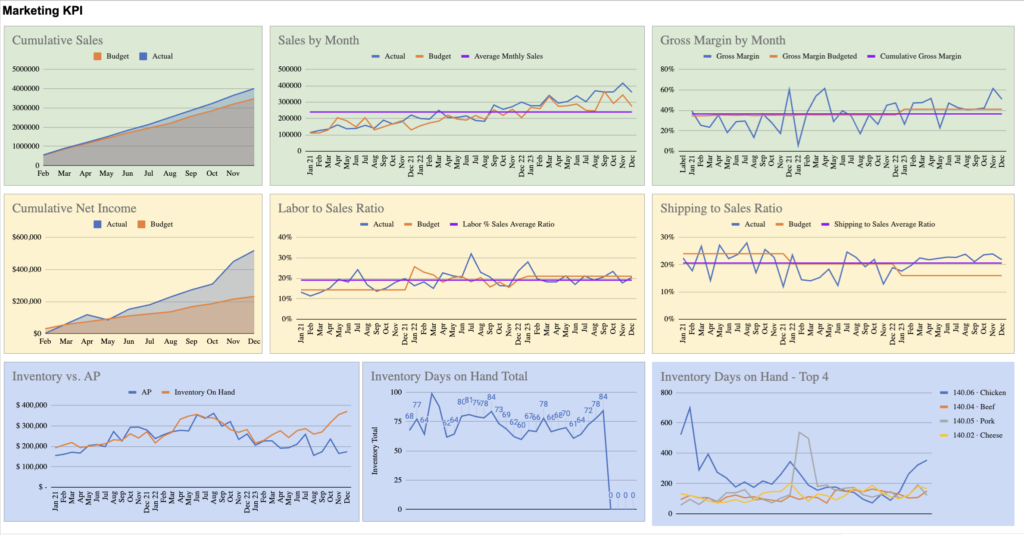In a competitive business landscape, your company’s approach could be the very thing holding it back.
From not standing out in a crowded market to mismatches in business scale, many farms and food businesses face obstacles that hinder their success without even realizing it. This blog post delves into common pitfalls within business models and provides some basic strategies to help address these challenges that can help you refine operations, better connect with your customers, and set yourself on a path to sustainable growth and success.
Typical Business Model Problems
1. Insufficient Differentiation
A key issue for many businesses is the failure to stand out in a crowded market. The inability to create a value proposition that captures consumer attention due to a lack of uniqueness can significantly impact market presence.
Strategies:
- Refine your product or service to ensure it offers something unique. For farms, differentiation could mean adopting organic practices, focusing on heirloom varieties, or implementing agro-tourism activities. Food businesses can differentiate through unique product offerings or by emphasizing local sourcing and sustainability in their branding.
- Clearly communicate your unique selling proposition (USP) in all marketing and branding efforts. Read our blog post Crafting a Clear Value Proposition: Your Base for Business Success.
- Who are your competitors? If you say no one, you’re fooling yourself.
2. Scale Disconnect
A mismatch between the market size you’re targeting and the scale at which your business operates can particularly affect small to medium-sized farm operations. This mismatch can lead to several issues:
- Overproduction or Underproduction: If the farm’s scale of operations is not aligned with the market size, it may produce too much (leading to surplus inventory and potential waste) or too little (failing to meet demand, missing out on potential sales).
- Resource Misallocation: Farms might invest in resources (such as labor, equipment, and inputs) disproportionate to the market’s size, leading to inefficiencies. For example, investing heavily in equipment for a small market may not be cost-effective.
- Financial Strain: Operating at a scale unsupported by the market size can lead to financial difficulties. If the scale is too large for the market, the farm may face higher operational costs without corresponding revenue. Conversely, operating at too small a scale might result in missed opportunities for economies of scale and reduced profitability.
- Strategic Misalignment: A mismatch may indicate a lack of strategic alignment with market needs and demands, leading to difficulties in positioning and selling products effectively.
Strategies:
- Perform a market analysis to gauge the size and potential of your market accurately.
- Be prepared to adjust your business model to access a larger or more profitable market segment if needed. Several ways to expand your market reach would be to sell online through area farmers’ markets or CSA programs.
- Sunk Costs: Sometimes, you just have to walk away from your “investments.” The faster you make that decision, the less time and money you waste.
3. Product Problems
For farms, the choice of crops to grow, how well these crops turn out, and how they’re packaged for sale can make a big difference. Trying out new farming methods and putting effort into high-quality packaging can make the farm’s products more attractive to customers. It’s about ensuring your products look good, stay fresh, and are presented in a way that catches the eye and feels special to the buyer.
For businesses that sell food products, it’s crucial that what you offer—down to the recipe, the way it’s packaged, and the overall quality—matches up with what people want and expect.
Strategies:
- Implement testing and feedback processes to improve your product continuously. Actively seek and respond to customer feedback to guide product development.
- Pay attention to market demands like organic ingredients, eco-friendly packaging, or flavors that are popular or currently trending.
- Be the Best: Determine what you can be the best at within your market and focus on that. Don’t try to be everything to everyone with your product(s).
4. Brand Problems
If your business’s image or identity doesn’t click with the people you’re trying to reach, you might face difficulties in attracting customers. It’s essential to really get to know the community you’re serving. This could mean sharing stories and updates on social media to give people a behind-the-scenes look at farm life or getting involved in local events to meet people face-to-face. These efforts can help people feel more connected to your business and what it stands for.
Strategies:
- Conduct customer research to understand your target audience’s preferences and behaviors. KTC recently conducted a survey for a client who was interested in adding a new line of goat cheese products to their direct-to-consumer brand. Through the survey, we gathered local market data to understand customer preferences regarding the type of products, flavor profiles, textures, where to purchase them, and what size packaging. From the survey results and alongside broader research into market trends and competitor analysis, we were able to determine what specific products would most likely sell well. (See Tips for Creating Surveys below.)
- Ensure all branding efforts resonate with and appeal to your intended market. You can do this by:
- Developing brand messaging that speaks directly to your target audience using insights from your customer research.
- Identifying the most effective channels to reach your target audience, whether it’s social media, email marketing, content marketing (such as blogs), or traditional advertising. Your choice of channels should align with where your audience spends their time and how they prefer to receive information.
- Creating content that is not only promotional but also provides value to your audience. This could be in the form of recipes, educational blog posts, or behind-the-scenes videos.
- Using analytics tools to monitor the performance of your branding efforts and adapting based on what’s working or not.
- Pick up the phone: Literally, talk to your customer. Ask them what they think directly!
Tips for Creating Surveys
- Always have a purpose in mind for constructing a survey, and ensure that every question you add helps you achieve that purpose.
- Start the survey with a short paragraph that explains the purpose of the survey and who your brand is.
- For demographic questions, model your questions after the U.S. Census or USDA Ag Census to compare your audience to larger audience data. Make sure not to start your survey with a sensitive demographic question, though — leave those to the end so that you’ve warmed up your survey participants.
- End with an open-ended question that allows for feedback.
- Ensure the entire survey takes 10 minutes or less to complete to minimize incomplete survey data. This usually aligns with asking 10-15 questions. Long surveys are only appropriate if you have a very loyal audience or a large incentive.
- Offer an incentive or reason to take the survey, preferably one that is not too costly to you but still hooks your audience. An example of this is a chance to win a $50 discount on your products at the farmers market.
- Use easy-to-use and accessible tools like Google Forms or Survey Monkey to conduct your survey. Paid tools like Survey Monkey provide analysis of survey results to draw insights easily. These tools also usually let you customize your surveys with your logo and brand colors to increase your brand awareness.
- Distribute the survey on your social media platforms, through your email list, at the farmers market, or wherever your audience can find you.
- Last but not least, make sure to analyze your survey data and implement suggestions. Thank people for taking the survey, and follow through on any promises of incentives.
5. Insufficient Investment in Sales and Marketing
Many businesses don’t invest enough time or money into getting the word out, which puts most of their hard work to waste. Developing a strategic marketing plan that includes digital marketing, attendance at local events, and partnerships can drive awareness and sales.
Strategies:
- Ensure you have a specific budget set aside for marketing and sales activities.
- Invest in skilled marketing and sales professionals capable of driving growth.
- Accountability and a Budget: Set a budget both for cost and results. Set SMART sales AND marketing metrics and hold yourself accountable to them.
6. Operations Problems
Operational challenges, from management issues to supply chain disruptions, can significantly impact productivity. As a business, you should invest in technology to boost efficiency, maintain strong relationships with your suppliers, and staff your operations accordingly to mitigate these risks.
Strategies:
- Have contingency plans for dealing with operational disruptions, including product recalls and staffing shortages.
- Review your budget monthly. Operations problems can be easily ignored–however, a financial report review every month will show a recurring operational problem in black and white—don’t skip it.
- Regularly review operational processes for efficiency and improvement. Charting monthly operational metrics has immense story value.
Example of a KPI dashboard
7. Long-term Financial Problems
Financial sustainability is a pressing concern for many farms and food businesses. Developing a robust business plan that aligns with realistic financial projections and securing appropriate funding are crucial steps.
Strategies:
- Explore diversification strategies that can provide additional revenue streams and reduce dependency on a single product or market.
- Create a detailed financial plan that supports your business strategy.
- Maintain transparent and regular communication with banks and investors to foster trust and support.
- You can’t chase cash flow and profitability at the same time. Pick one, fix it, and then focus on the other.
Kitchen Table Consultants and Taste Profit Marketing can help you create a strategic business plan that can help you avoid these common pitfalls and position your business for sustainable success. If you want to learn more, click here to schedule a free consultation.

